Imagining in the relaxed bodyBrodsky, W 2000, ‘Post-Exposure Effects of Music-Generated Vibration and Whole-Body Acoustic Stimulation Among Symphony Orchestra Musicians’, Psychology of music, vol.28.1, pp 98–115 Brodsky’s study from the field of Music Psychology looked at the effects of Vibration and Music experiences within a music and Vibro-Acoustic session using a sample of 54 Symphony Orchestra Players. Subjective reporting from participants found increased levels of relaxation and intensified depth of verbal narrative and imagination during cognitive tasks performed, and client feedback. This paper is incredibly interesting as it is one of few papers in Vibro-Acoustic research that presents a perspective of a psychological Vibration/Music experiences from a musical rather than therapeutic perspective. The researcher’s note that their findings are limited due to the scope of the study. However, the research suggests that vibrations/music experience can increase the effects of a music composition's emotional effect and level of cognition on participants. Class notes and thoughts - week 9 Positionality - where and why are we coming from this position? Subjectivity of this focus. Coming from a specific disciplinary perspective. Precursor 2 - Ideas Artefact ideat, Portfolio, Essay Artefact: Drive folder represented ‘parts of a physical, mental and metaphoric body systems, like a symbolic system of representation of different angles of the topic. My ‘ramblings’ and asides, and left field musings, focused on the off topic body as much as the on topic body. Poetry of vibration, earthquakes, thunder trains, motorbikes…Frequencies of planets. ‘Vibrating bodies…...recording the train, thunder, Natural phenomenon… Sound Healing…..Linking back to this idea that ‘existence’ is vibration, illness is vibrations out of whack….experience in a body, illness, relaxation, anxiety, health, frequency. Use sound and Abstract video to convey a loose narrative representation of theme and phenomenon. The artefact will have a structure of drive folders, with curated snippets of audio, video, text, pictures, links….. *Update* the drive idea for my artefact has been abandoned in place of a audio/visual work. However, you can find the planned structure of my artefact drive HERE Feelings in the body…. How are we ‘engaging’ with this drive or video, depth of thinking about the topic - helped me frame my research……. There are so many papers I want to read in this 'ocean research', hopefully I will have time one day... I have been trying to look at my topic via diffent lenses of perception.
As a creative outlet I wrote a piece of prose that looked at the experience of being in a body, it hardly relates to my research in any any meaningful way that could go into my thesis. The process of engaging with a fairly objective research topic - via abstract lenses feels counter intuitve to my instincts. However, it seems to be helping me see my topic from different angles. Which has helped me connect more subjectively to what interest me about the research area, whilst also arming me with differing perspectives of word arrangement in order to help explain my topic to other people. It is also way more fun and personaly rewarding to include some aspect of creativity. (see extract below)
0 Comments
I really enjoyed Martina Copely's 'They refused to play, out of fear', no doubt' . I really liked how the arangment of words and pictures created a unified balanced design. I liked its focus on miniamlisim and the emphasis on interacting with ones own work as en editior within the form. I look upon Copely's work with somehwat of a level of envy in the freedom expressed in Copely's design. As in comparison, my writing seems dictated by a more scientific and systematic approach that presents other's researchers ideas and findings. I sometimes feel that I enjoy this class so much as it is enabling me to express my creative spirit in a year that seems somewhat dictated by mostly dry readings and diminhsed time for my usual creative endeavours. In liue of trying to force myself to get organised with my research, writing and reading I have created a draft structure and table of contents of my paper. I found it to be a incredibly fruitful activity, as it made acutely aware of my limitiation of words per section, what exactly I should be focusing my attention, and how I can link my ideas over a long form piece of writing. I showed my plan to my supervisor, whom seemed mostly happy with it. However, he questioned the need for undertaking a practise based component within my research, as he feels I have undertaken enough reading to warrant a straight research thesis. This change in plan is evidenced by the striked out section 4 below. Another change I may make, is that instead of an experiement, I may undertake a meta-analysis of frequency and affect in the vibration literature. Vibration, Music, Relaxation: Experiences of Frequency and Effect
Investigating the effect of frequencies used in tactile vibration, music and sound technologies to modulate physiological and psychology feelings of relaxation. A literature review, meta-analysis and lab experiment.
Screenshot from William Kendridge's Charles Eliot Norton Lectures entitled 6 Drawing Lessons (2015) Class exercises
However, the word limit is restrictive in the amount of depth required when being specific. As such these considerations are framing my idea. Research/Creative minds are somewhat split….So I think getting creatively inspired could be of benefit. Looking at the ‘effect’, 'affect' and 'emotion' from a subjective experience. The Rabbit Hole - informs part of the project that needs to inform an audience. What do I need to tell someone who doesn't know me or my project or why I think it's important? Audience: 2 examiners. Consistent to a genre of a honours thesis. Comply to the genre Feedback - Precursor A few days after my precursor presentation I had the revelation one night that I had totaly denied the subjective experinece of being within a body, during a Vibration/Music experience. I realized how dogmatic I had been about looking at my topic from one perspective. It was as though I had taken all the air out of a room as I solely wanted to focus on a wall. Yes, I may be writing about the wall, but I need to know what else is in the room - what surrounds the wall. My thesis may be an island, but I need to see what else is in the ocean. I had become so focused on the object and cause of the affect, I had forgotten what the experience is like for the person undertaking the experience. It also made me reflect my own reasons for like Vibration/Music experiences. CymaticsConverselyThe process of visualising the affect of sound in sand, water and digitialy creating geometric patterns and physical forms. In the video below Evan Grant further unpacks the notion of cymatics and seeing sound. He speaks of how Cyamatics is been used by scientists to help identify animal and fish calls, replicate physical forms such as snowflakes using sound as a medium, and the application of music games and theraputic interventions. In the given examples higher frequency sounds seem to create more inricate patterns. Conversley, in the literarture around Vibration therapies lower frequency sound seems to have the greatest physicaly beneficial effect. 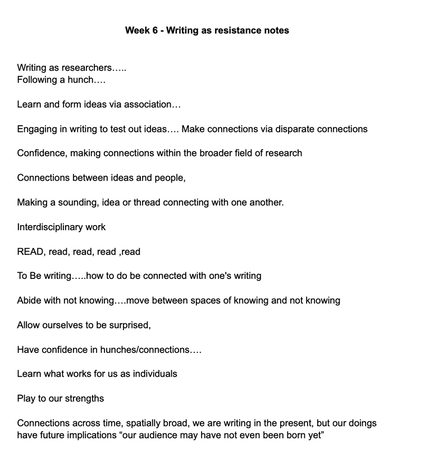 Class Exercise: What does this word mean to you? "VIBRATION" It is the fundamental building block of life: vibration is matter. I love sound, sound is vibration, sound translates a feeling that can make me feel good or bad or think a certain way. My experience of life is feeling and thinking therefore vibration underlies the basis of my existence." There is much debate within music circles about the western conventional tuning of instruments at 440Hz. It is claimed that 432Hz is the natural frequency of the earth, and that as a consequence tuning instruments to 440Hz is harmful to human health and putting us out of touch with nature. The verdict is still out on the truthfullness of such claims, however, it is interesting to see and feel the effects of the different frequencies below. I am curious as to how to create a vibration plate for myself. According to some researchers 440Hz made rats eat more and gain weight in comparsion to rats exposed to music tuned to 432Hz.So maybe this means western conventionaly tuned music is responsible for obesity crisis in the west!
For my Precursor 1 presentation I am looking at Vibration/Music experiences via the lens of the body. I am using the precursor as an excuse to further persecute the vibration literature for specific heath claims in relation to the body. I am particular interested in component musical affect, such as rhtymn, pulse and freqeuncy. This is somewhat of a issue within the literature as methods for reporting aspects of variables can rather vague within some publications. Nevertheless, I have been narrowing down my research question and I have landed on the following combination of words: The Somatron is one of many vibration/music devices available in the commercial market. This is a point of frustration within the literature as out of the multidtude of devices many are constructed differentialy (which leads to multiple variables to interpret). Each device also has slightly different methods of music/vibration output, which makes it even harder to clarify specific affect within the literature. The Somatron recliner as seen in the video below seems to work via translating the sound to vibrations via specialy designed speakers situated in the chair. This is a point of difference to RMIT's compostional or vibration/music strategy, as within the AKE lab we purposely and manualy craft each vibration/music compostion and the vibrations are not triggered in a speaker, but rather created via a specific vibration accuator. I have comenced the collation of vibration claims and their propertied health effects, from within the systematic review literature. My hope is that I can compare frequency and affect data in the form of a meta-analysis further down the track.
1 - Therapy: ‘The Vibro Acoustic Method’ -pioneered by olav skills - 1989 Method: low vibrations and music in a chair or bed. Music type: relaxation music, slow Vibration range: 30-120 hz Duration: 20 - 30 minutes Claim: decrease in blood pressure, pulse rate, muscle oscillation Diagnostic: Source: Eha Rüütel M. Sc. (2002) The Psychophysiological Effects of Music and Vibroacoustic Stimulation, Nordic Journal of Music Therapy, 11:1, 16-26, DOI: 10.1080/0809813020947803 Therapy: Vibroacoustic Method Method: low vibrations and music in a chair or bed. Music type relaxation music, slow Vibration range/Claim: 40 - 80 hz - most effective vibrations for whole body 40 -60 hz - for reducing spasms 40 - 50hz - pain in the abdomen Duration: Diagnostic: Source: Eha Rüütel M. Sc. (2002) The Psychophysiological Effects of Music and Vibroacoustic Stimulation, Nordic Journal of Music Therapy, 11:1, 16-26, DOI: 10.1080/0809813020947803 Researchers: (Skille, 1989; Skille et al., 1989; Skille & Wigram, 1995) 2 -Therapy: The Vibro Acoustic Method Method: Music type: Vibration range: 40hz (between D#1 & D1) Claim: “considered to coincide with the vibratory frequency of the hypothalamic area and has an essential role in regulating cognitive processes, above all in the mechanisms of selective attention” (p.17 Rüütel, E, 2002) Duration: Diagnostic: Source: Lehikoinen (1994) Researchers: Galambos, Llinas, Makeing, Ribary, Naatanen 3 -Therapy: The Vibro Acoustic Method Method: Music: Spectrum Suite" by Stephen Halperna & Spectrum Suite “with a low frequency pulsating tone with the set of frequency values equal to 68,38,41, 50, 55, and 63 Hz. This selection of frequencies within a relatively wide range was chosen for the following reasons: (a) to study the effects of the low frequency component as a whole and to exclude the specific effects of one concrete frequency (p.18) Vibration range: Duration: Claim: Aparatus: vibroacoustic bed with 6 built in amplifiers. Diagnostic: Blood pressure and pulse rate - digital electronic blood pressure monitor (Omron HEM 405-C). Oscillation fr of relaxation Study: experimental study (24 healthy uni students) 6 x 22 minute sessions of different conditions. “Six different conditions were used: music with two different intensity levels, vibroacoustics (the same music with low frequency sinusoidal pulsating sound) with two different intensity levels, and silence (no stimulation) two times. According to the rotation method 12 different trial plans (different orders of conditions) were used” Source: |
AuthorWrite something about yourself. No need to be fancy, just an overview. Archives
June 2021
Categories |
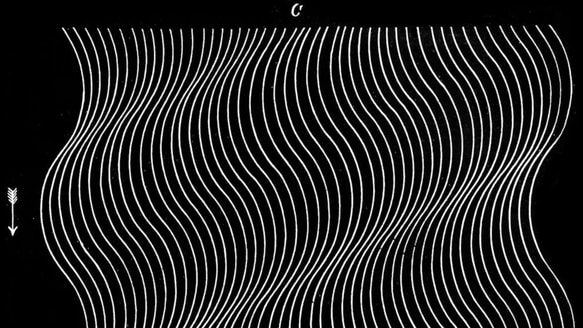
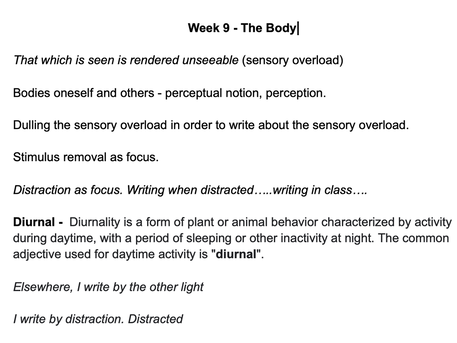
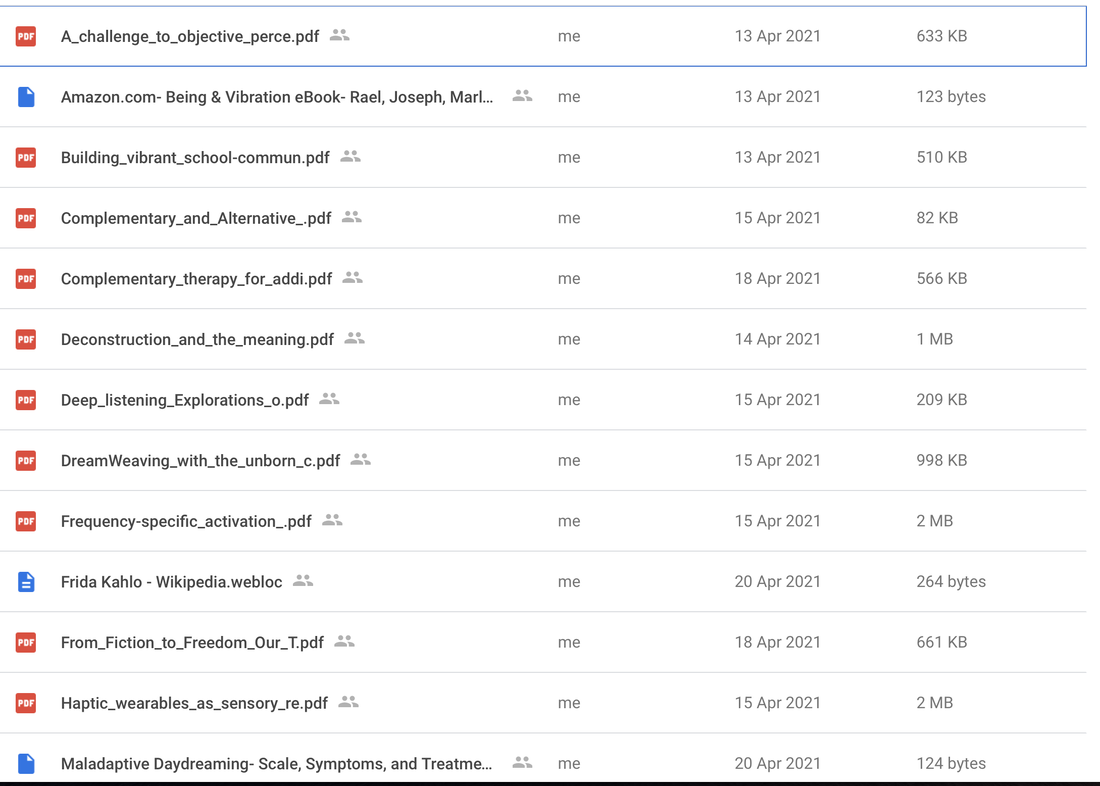
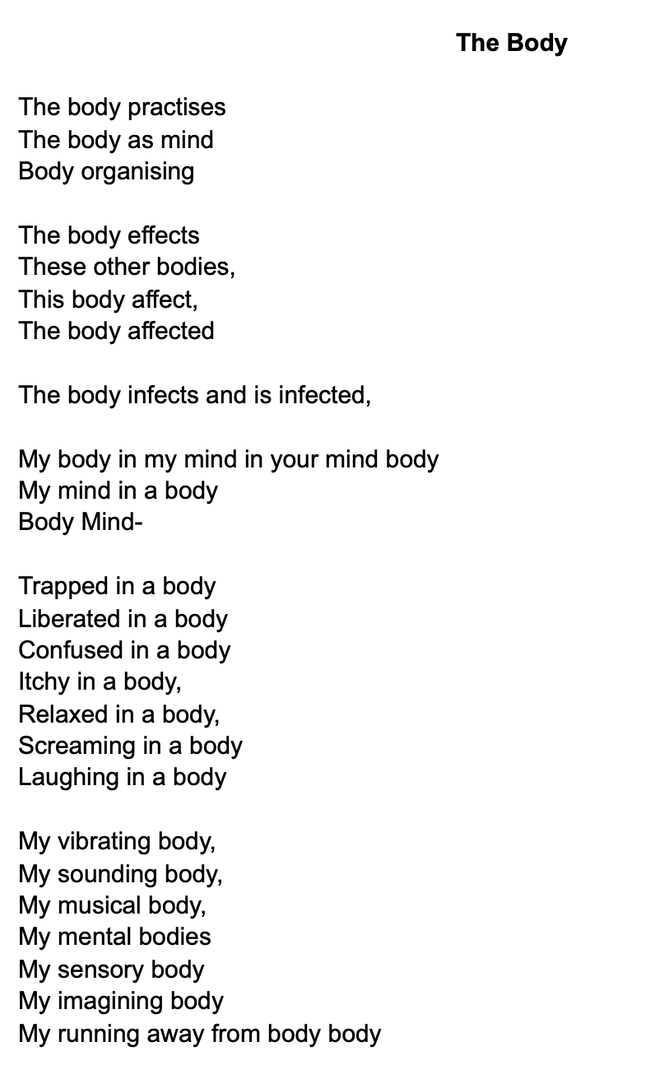
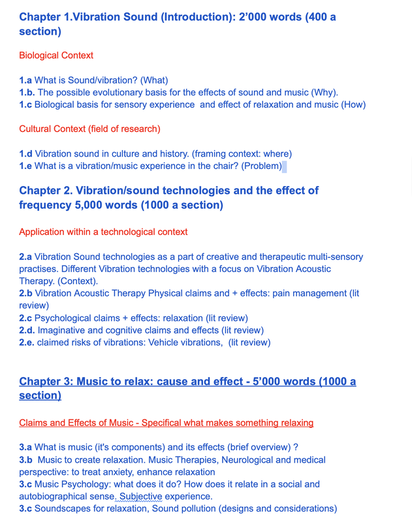
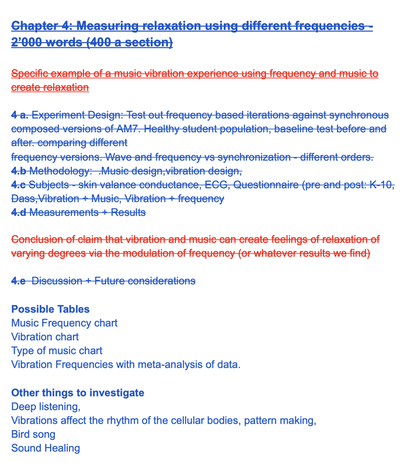

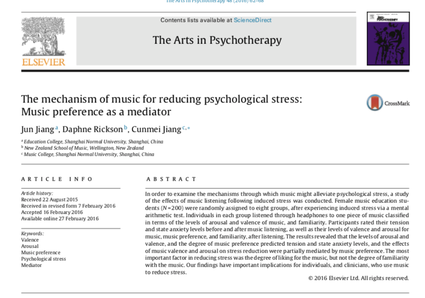
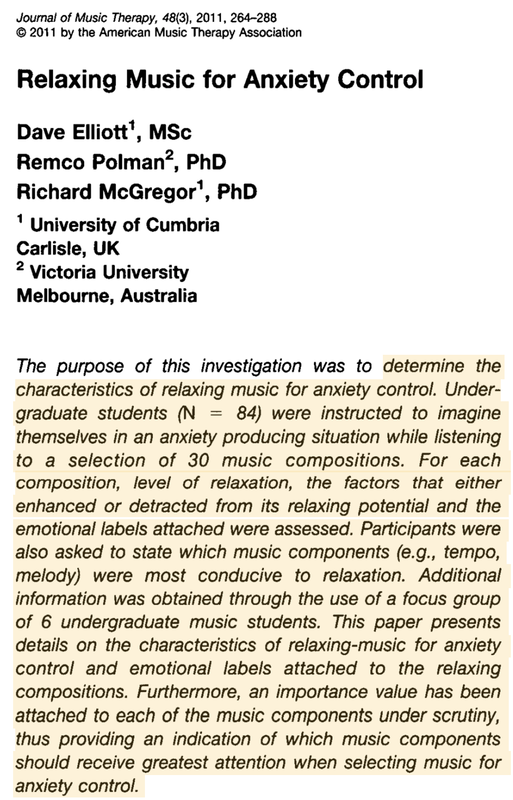

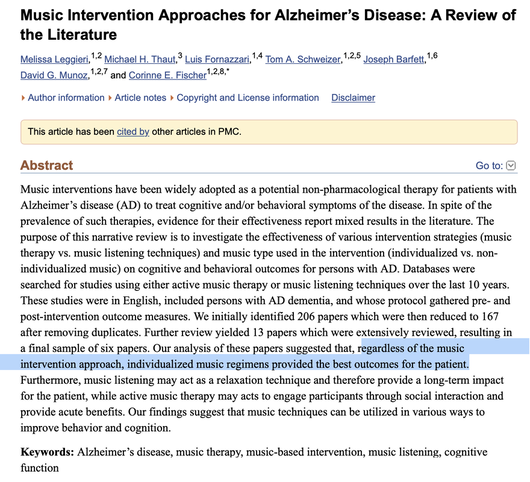
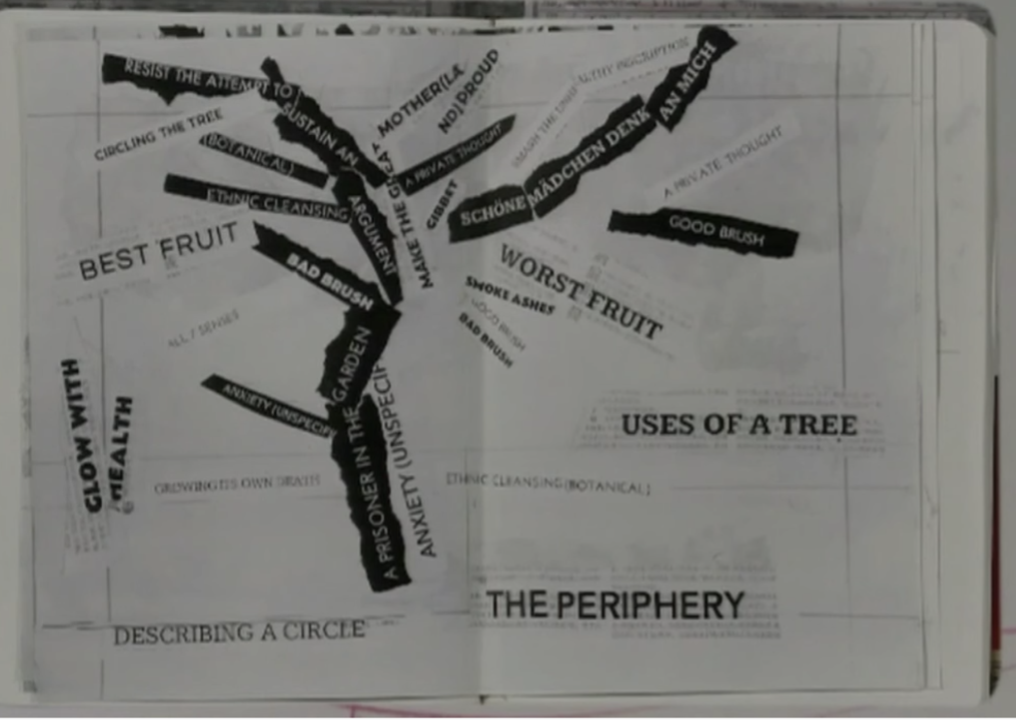
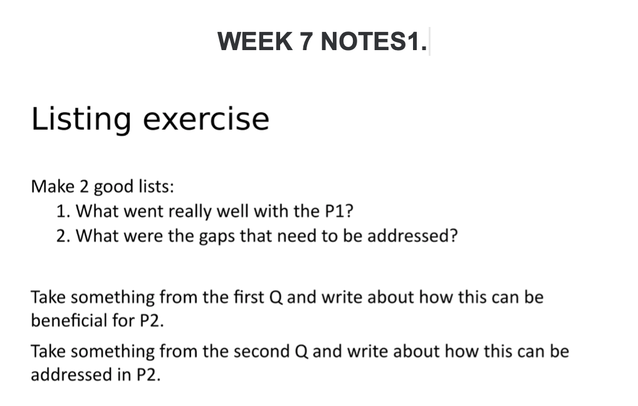
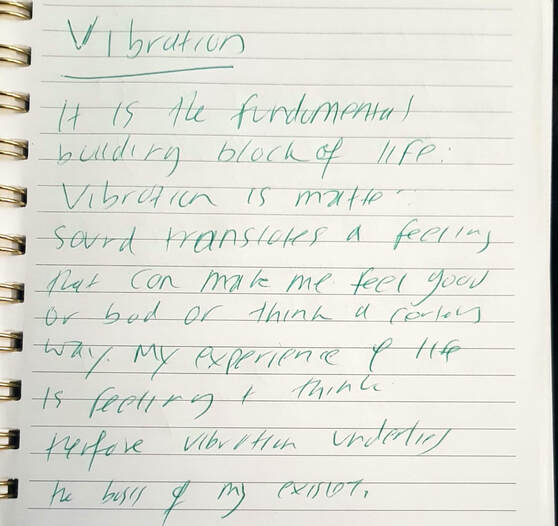
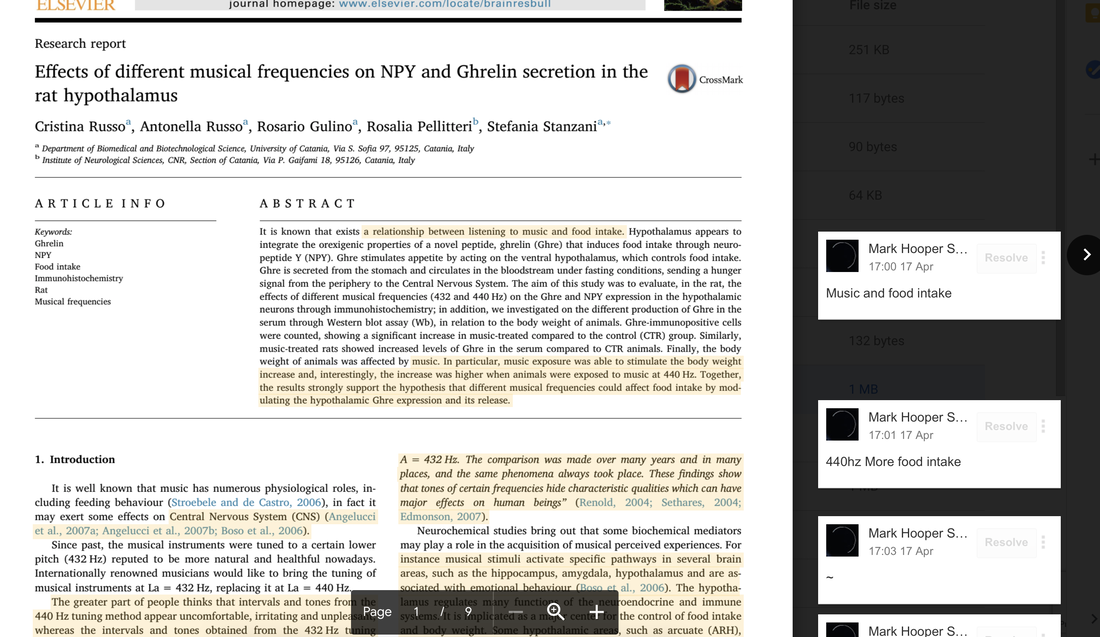
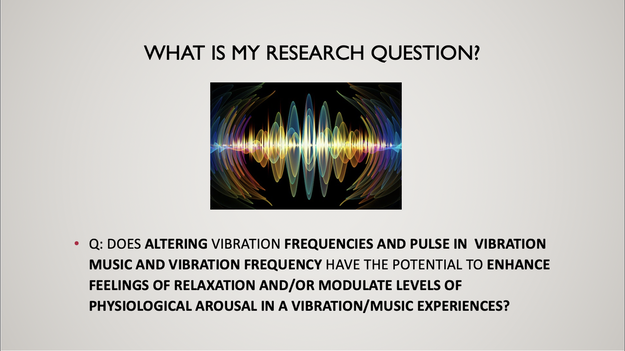
 RSS Feed
RSS Feed